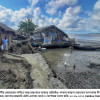Address the causes of internal migration

It is concerning that approximately 71 percent of internal migrant workers in Bangladesh move due to livelihood challenges or a lack of job opportunities. According to a recent survey, around 69 percent of internal migration is further driven by low wages. This underscores the persistent lack of opportunities in certain regions of the country. Internal migration also imposes significant costs both on those being compelled to move and on the areas they are migrating to.
The survey, which included 2,505 individuals across 10 districts (five source districts and five destination districts), also found that around 48 percent of internal migrants are motivated by the prospect of better healthcare when choosing a destination, while 85 percent seek higher wages. Naturally, this drives many towards Dhaka—and occasionally a few other major cities—resulting in overpopulation and straining the city's ability to provide basic services for such a large population.
Additionally, the survey revealed that climate change affects 55 percent of migrants from source districts. To cope with extreme weather, over 30 percent of migrants from these areas rely on their savings, further pushing them down the economic ladder. As witnessed during recent floods, thousands of families lost their homes and livelihoods, with their cattle or farmland either washed away or damaged. With extreme weather patterns becoming more frequent, such struggles are increasingly affecting a larger number of people, especially those who are already vulnerable.
The opportunity gap between rural and urban populations in Bangladesh is significant and well-documented. Numerous development agencies, including the UNDP, have identified various factors contributing to this divide, such as over-centralisation, poor infrastructure and communication networks, and the impacts of climate change. According to a 2018 report by the International Organization for Migration (IOM), one of the primary drivers of migration is economic necessity. Since most migrants come from agriculture and fisheries backgrounds, they often find themselves seeking opportunities on the margins of the urban economy. Lacking the necessary training or skills for formal sector jobs, many face limited chances of escaping the poverty cycle.
It is high time the government developed a comprehensive strategy to address internal migration. It should focus on developing underprivileged regions, ensuring better economic opportunities for residents, and reducing the need for migration. Additionally, it must work to mitigate the impacts of climate change in vulnerable areas so that affected populations can better withstand extreme weather events. Introducing a Universal Basic Income scheme for vulnerable populations and expanding social safety net programmes could also provide crucial support.
Follow The Daily Star Opinion on Facebook for the latest opinions, commentaries and analyses by experts and professionals. To contribute your article or letter to The Daily Star Opinion, see our guidelines for submission.

 For all latest news, follow The Daily Star's Google News channel.
For all latest news, follow The Daily Star's Google News channel. 










Comments